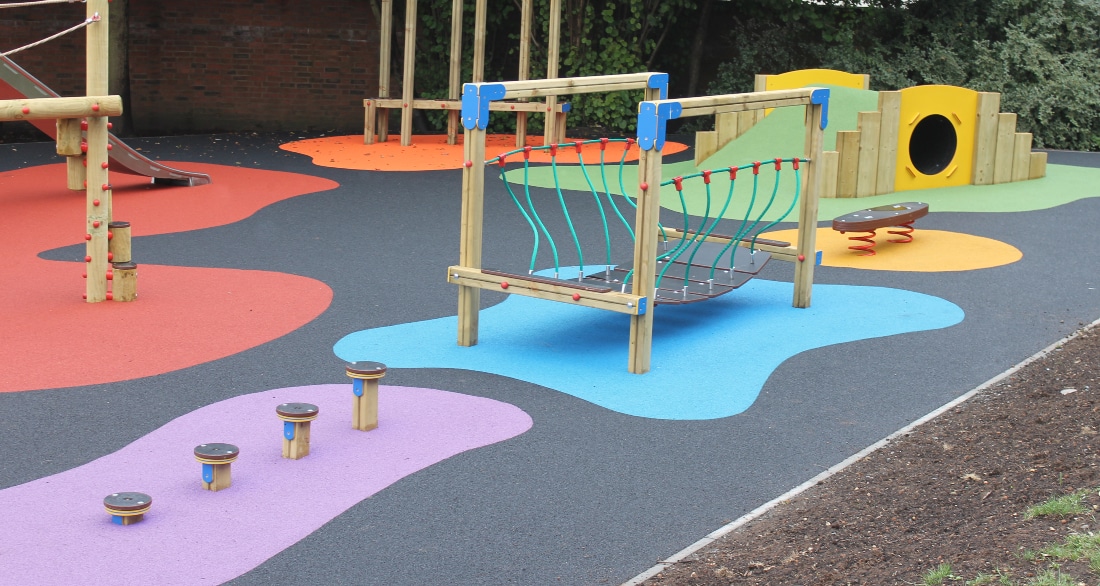School Playground Safety:
What To Consider When Planning Or Upgrading Your Space
School playgrounds are a vital part of daily life for pupils – offering a chance to be active, burn off energy, and engage in social play. But with all that freedom and excitement comes the responsibility to ensure safety. Children naturally test boundaries, invent new ways to use equipment, and engage in high-energy activities – so safe design and planning are essential.
Here are some of the key areas to focus on when it comes to creating a safe and inclusive school playground.
1. Choose Equipment Designed For Children
It may sound obvious, but all equipment should be purpose-built for use by children and meet modern safety standards. This won’t necessarily be the case with all suppliers. That means:
- Sourcing from a reputable manufacturer with proven safety credentials
- Ensuring installation is carried out by qualified contractors to BSEN 1176 standards (the benchmark for playground safety in the UK)
This not only protects children but also reduces long-term risks for the school.
2. Ensure Age-Appropriate Zones
One of the most effective ways to prevent accidents is to group equipment by age suitability. Children have very different needs at different stages – not just in terms of ability, but also in how they interact with play.
It’s generally recommended that playgrounds are divided into zones for:
- Under 2s
- Ages 2–5
- Ages 5–12
This helps ensure that climbing heights, play styles, and challenge levels match pupils’ developmental stages.
3. Plan A Thoughtful Layout
How the space is laid out is just as important as what goes into it. Crowding all the most popular items into one area can lead to congestion and accidents. Instead, layouts should:
- Separate quiet, imaginative, and high-energy play areas
- Include clear sightlines for supervision
- Factor in pupil movement between zones to avoid bottlenecks
A good layout doesn’t just reduce risks – it supports better playground behaviour too.
4. Use Safety Surfacing
All equipment with a risk of falling should be installed with appropriate safety surfacing beneath and around it. This can include:
- Wetpour Rubber
- Artificial Grass With Shockpads
- Rubber Mulch
The right surface will depend on your site and budget, but all safety surfacing must be tested to BSEN 1177, which measures critical fall heights.
Bonus: Surfacing choices also impact accessibility – so it’s worth choosing a surface that works for all pupils, including those using mobility aids.
5. Think Long-Term: Maintenance And Inspections
Once installed, a safe playground still needs regular upkeep. Schools should:
- Carry out visual checks daily or weekly
- Schedule termly maintenance and cleaning
- Book annual independent inspections (as recommended by ROSPA standards)
Not only does this keep the equipment safe, it helps spot wear and tear before it becomes a problem.
Final Thoughts
Playground safety is often viewed as a box to tick – but it’s far more than that. A well-designed, age-appropriate and safely surfaced playground can bring huge benefits to children’s health and wellbeing, without creating unnecessary risks.
If you’re planning a new play space or updating an older one, it’s worth speaking to an experienced consultant who understands how safety, design, and fun all work together.
Need Help Making Sure Your Play Space Is Safe?
With so much to consider, it’s easy to feel overwhelmed. Speaking to a Play Advisor can help narrow down the decisions you need to make based on space, goals, and budget.
Get in touch today for expert guidance tailored to your specific needs and goals by calling 01244 375 627 or via the Contact Form
Further Reading: Check out our guide on Understanding Design Flow In Playground Layout
Explore More Using The Ultimate Playground Design Guide Menu




